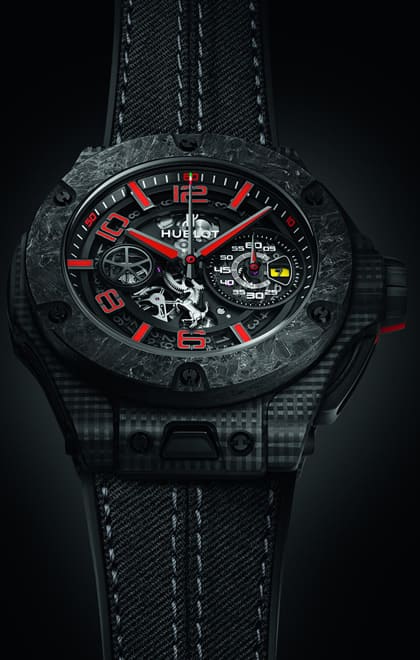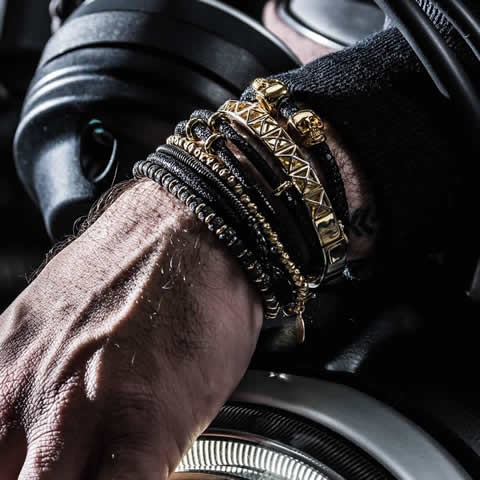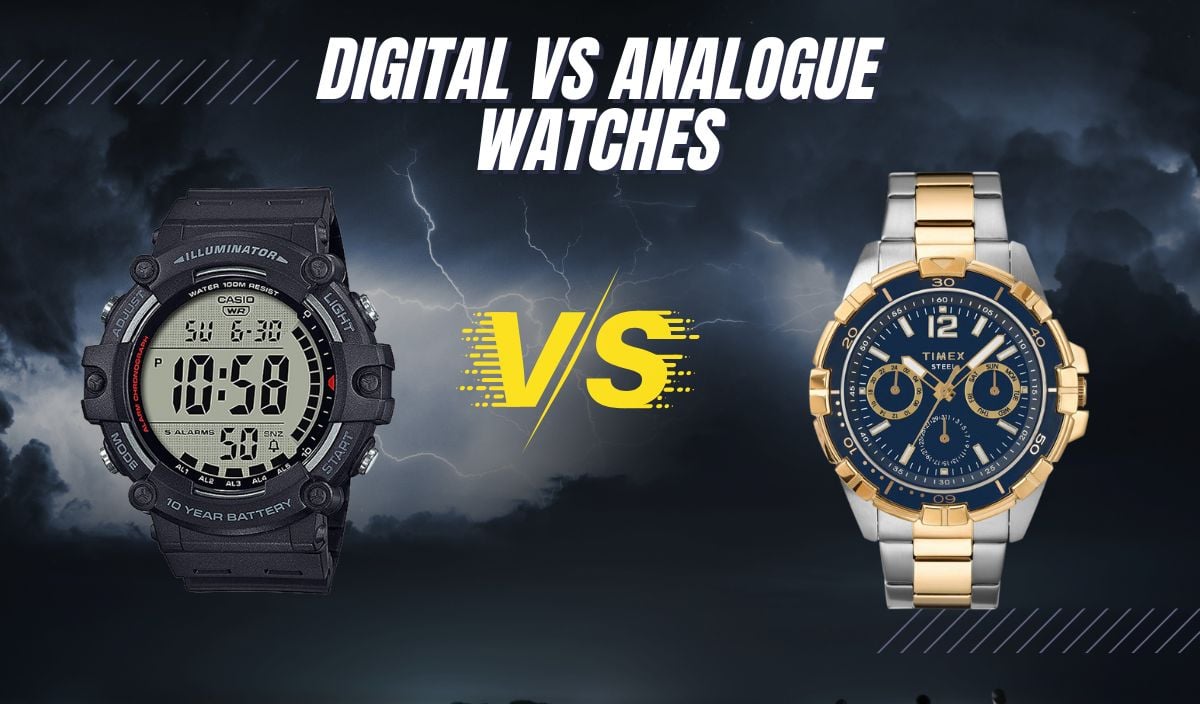
Digital Vs Analog: Which Watch Type Is Best? (Let’s Get Digital!)
So you’ve finally decided to become a watch enthusiast, eh? Deep breaths. I know it’s overwhelming; we’ve all been there. Between the myriad of brands, the hated and the loved – there’s a lot to get through.
Before we dive into the nitty gritty specifics of which watch is right for you, it’s important to remember that a timepiece is … for you. Criticisms from horological cults may try to convince you that a digital watch isn’t a genuine timepiece.
The fact is, the romantics of our timekeeping obsession exist far beyond the pearly white gates of exclusivity and societal compliance. If you trust the process, the memories of your life will soak into whatever lands on your wrist—and that will be forever priceless.
Anyway, back to brass tax. For the purposes of this breakdown, we’re going to split the entirety of the horological field into two groups; digital and analog.
Analog: Movement Driven
Okay, so, in defining the analog, we have to recognize that the term comes from the nature of the movement, the mechanism by which time is manufactured. And we’ll also have to have to get face-to-face with the dial.
Let’s dissect the anatomy of Rolex’s definitive Oyster Perpetual for reference. Beneath the domed glass lies a couple of hour markers, some hands, and an elliptically textured face. The face in itself is devoid of any electronically actuated buttons or interfaces that would indicate the presence of a digital display.
Fairly straightforward, right? If we go even further down below the face, we get to the movement. Before we chime on what’s under the hood for the Oyster Perpetual, let’s get through the types of movements that you can expect. We’ve got:
- Manual Wound
- Automatic
- Quartz
It may start to feel like the shell game but don’t fret; it’s not too difficult. Leaving out quartz for a minute, manually wound and automatic watches are willed into motion purely through mechanical processes. Essentially, there are four principles that mechanical watches use to create time and maintain it.
- Power Source: a mainspring
- Transmission: an assortment of gears
- Distribution: the transfer of energy
- Regulation: the maintaining of energy
In simple terms, the mainspring gets wound tighter and flings out a burst of mechanical energy through a bunch of gears, regulated by an escapement wheel and balance wheel that ensure energy doesn’t zip away in a couple of seconds. The difference between automatic and manual watches boils down to how they’re wound.
Manual watches request that you ruffle the crown back and forth to wind up the spring. In the case of the Oyster Perpetual, which features an automatic movement, there’s a self-winding rotor that rocks around the mechanism while you sway your arms or shake your wrist, using that inertia to wind up the spring so you don’t have to.
Quartz, otherwise referred to as battery-powered, watches are a slightly different ballgame. Conceptually, they sound like the workings of a digital watch—because of the battery, but because of its elemental source. Let’s break down the three principles of manufacturing time in a battery-powered watch and see where we land. You’ve got;
- Power Unit: usually a disc-shaped battery
- Integrated Circuit Unit: a guide for electrical current
- The Quartz: a literal quartz crystal that vibrates when shocked
So, again, the battery here is the energy source that surges electricity through a circuit into the quartz crystal. Vibrating when shocked, the quartz crystal sends enough energy back through the circuit to pulse a second of time to the hands on the surface.
The uniqueness of quartz is the frequency at which it vibrates—32,768hz. It’s pitched just high enough to resonate out of earshot and cheap enough to send consistent pulses to relatively inexpensive counters, making it perfect as a budget alternative to the more expensive movements.
Digital: More Than An Apple Watch
You’d be forgiven for assuming that a rechargeable Apple watch stands somewhere in the lineage of the digital timepiece. While it might be baked into the name, digital watches are actually powered by quartz movements rather than full-on smartwatch batteries.
The function works almost identically to its analog counterparts, except that the details of time are relayed through a screen rather than a set of hands. These watches generally don’t require a charge, use low-energy screens and have functions beyond the scope of an analog watch.
Speaking of screens, the digital watch is part of an effigy of displays ranging from negative LCDs to the newer MIP screens for added visibility. The majority of the screens that aren’t touch sensitive are virtually the same, with the exception of being slightly more efficient to power and legible to read.
Digital Vs Analog Watches: Which Should You Choose
So, now that we know the differences between their physical makeup, we can start to hone in on which watch is right for you. There are a number of factors—often considered together—that determine how you should make your decision, so let’s look ‘em over.
Price
Easily the biggest marker of variance between the two, digital watches have a hard time pricing up against the complexities of an analog watch. Analog watches, particularly the ones chocked full of complications in manually wound or automatic outfits are like Rube Goldberg machines, designed as the most complicated way to produce what is now quite simple.
With the exception of fashion houses and microbrands that mainly use robo-manufactured automatic movements, mechanical watches of substance are generally handmade. In the digital space, you might see a few timepieces that spur past the four-figure mark, but it’s pretty rare.
Usability
If we’re talking about everyday use, let’s throw manual winding out the door. Though beautiful, most manual watches are incomprehensibly tedious for daily use, with power reserves of no longer than two days and a balanced touch required to wind just the right amount of tension so as not to damage the spring.
Automatics fare much better with self-winding technology, which as stated above simply requires the active movement of the wrist throughout the day, before ultimately relying on a power reserve if left around for a few days. Quartz is king here, with an average lifespan of an entire year.
Quality
If we define quality within the parameters of what a watch is trying to achieve, we find a quality watch between the two types. If we define quality as a measure of luxury, the analog timepiece finds itself tightly wrapped in precious metal and laborious texture more often than in the digital space.
You’ll often find knurled crowns and fluted bezels in the automatic space of timepieces—because who wants to pay well into the multiple thousands for a watch whose heart is half-machine?
3 Excellent Digital Watches At Three Different Price Points
Casio G-Shock GWM5610-1 – ($150)
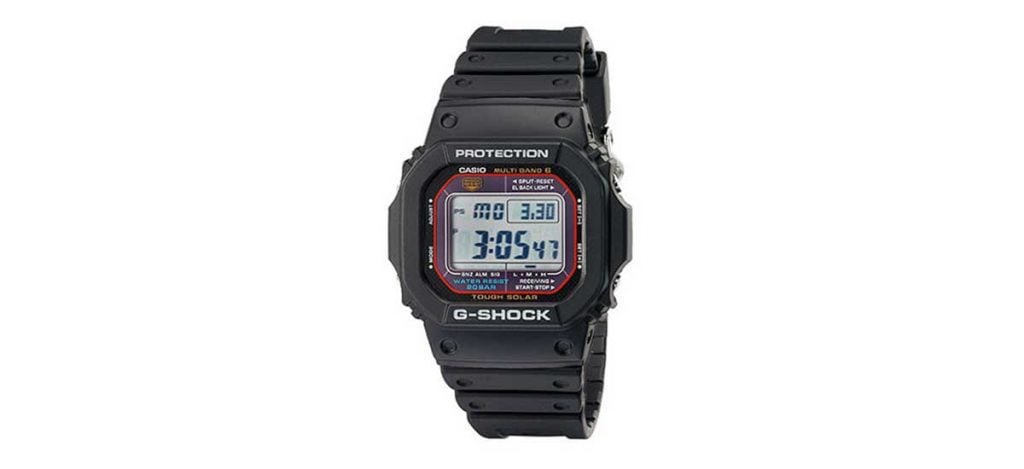
More than just a first watch for the recently walking, Casio’s G-Shock is definitive of what you should expect from a rugged daily driver. Apart from being practically bulletproof, the G-Shock GWM5610-1 is stuffed to the gills, with functionality with its 31 timezones, solar-powered rejuvenation, and clearly legible positive LCD screen.
Unlike the AW700 series, which befits a metal band, the GWM comes on a softer rubber strap ergonomically designed for effortless wear. Considering its competitive price of $150, you can’t really go wrong with a G-Shock as your daily driver; its inventor, Kikuo Ibe even wears it with his three-piece suits!
Hamilton American Classic PSR Digital Quartz – ($745)
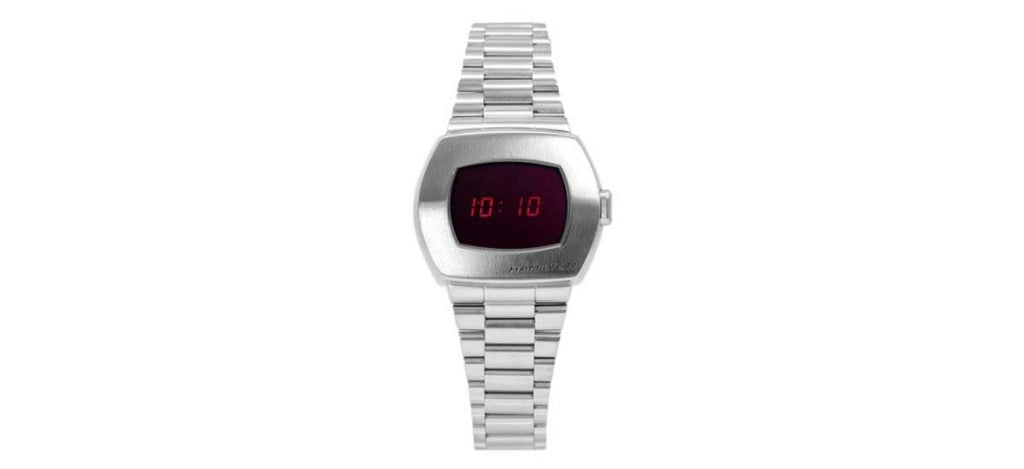
The PSR Digital Quartz looks like if you peeled the visor off an astronaut’s helmet and buried it into some metallic space rock with a stylish bracelet. Granted, the display’s units aren’t far off pixels on a microwave timer, though it’s the point.
The ref. H52414130 commemorates Hamilton’s innovation of the seventies in the Pulsar, the first digital watch that shared the same red pixelated typeface. Resting comfortably under $1000, the PSR brings retro design back to the future.
Girard-Perregaux Casquette 2.0 – ($6,000)
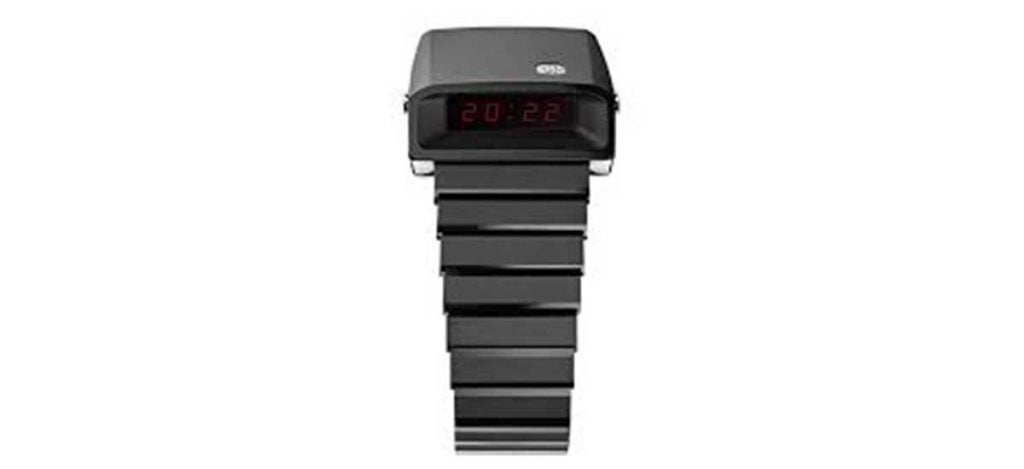
Moving up a couple of price brackets, we make our way to the Girard-Perregaux Casquette 2.0. I know it may look like I’ve made a mistake seeing as topside up it looks like a police radar hooked up to a bracelet, but this enigmatic side-view watch is an evolution of Girard-Perregaux’s unorthodox seventies original.
Aside from its titanium embellishments on the case back, pusher, and embossed logo, it looks exactly the same as its predecessor. Functions are plentiful, though, with the new caliber GP3980 quartz movement that adds a second timezone and chronograph, to name a few. You can essentially bake a specific date to read at a certain time with the secret date function, which can be a subtle touch on your anniversary.
The Digital Deal
The first watch I ever received outside of Ronald McDonald’s Happy Meal plastic surprise came from my grandfather. It was a full-metal jacket, 80s Casio Marlin, which, aside from the harpooned fish etched into the bezel, had this immeasurable coolness that felt like being a consigliere to Al Capone.
He gave it to me with a then cracked screen, which was explained by the classic grandad spiel of half-truths. Twelve-year-old me wholeheartedly believed that it cracked as a result of his daring stints in the UN, traveling in dual-rotor helicopters and bleached white tanks.
Exposure to current affairs today has taught me that the UN really means taking expensive transport to places to argue for a few hours and do nothing, and the crack was more likely fashioned by banging into a desk drawer.
But I still appreciate the effort in the story, and every glance at that vaguely legible LCD screen that flutters its pixels from its ill-fated wound reminds me of the man who taught me how to dream. If not for its captivating LCD screen and whimsical retro design, I doubt that story would still be remembered today if it were a bland analog marked for the Classique enjoyer.
Anecdotes aside, digital watches have an essential spot in every collection, imbuing the wrist with an effortless style that doesn’t require you to spout knowledge of its history or have you understand the inner workings of its design.
Whether you’re gearing up to go off the grid or you just want a daily driver that doesn’t fuss about getting a ding or too, the digital watch is an uncompromised bargain that you often don’t have to trade your kidney for.
About Exquisite Timepieces
Established in 1998, Exquisite Timepieces is your one-stop shop for all things luxury watches! We are an authorized dealer for 60+ luxury watch brands including Omega, Hublot, Seiko, & Longines! We are proud to showcase one of the world’s largest pre-owned watch collections, including renowned brands like Rolex and Patek Philippe. Check out our brand new watch arrivals here and popular pre-owned listings here.


